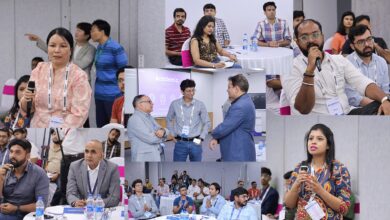Meet the Top Three Solvers of Tomorrow from Season 2
Samsung Solve for Tomorrow 2023 winners were announced at a Grand Finale in Delhi, after a 6-month of rigorous process of screening thousands of applications, training & mentoring.
Take a glimpse at their Solve for Tomorrow journeys here:
Stemly – Yash Yadav from Nagpur, Maharashtra is seeking to tackle the stereotypes and gender bias in STEM sciences. Stemly’s conversational AI tool uses natural language processing and AI techniques integrated with positive reinforcement by sharing the experiences of leading women in STEM, providing updates on recent advancements, offering mentorship, and learning opportunities, delivering encouraging messages, and connecting users with STEM specialists. This tool also integrates data from user inputs, along with their academic performance, teacher evaluations, sentiment analysis and self-surveys to personalize their ongoing positive interventions.
Think – The team of Mukkabir Rahman, Ankush Yadav, and Varsha KJ from Golaghat, Assam has built a cooling device called Kavach that is a lightweight and cost-effective device to regulate body temperature for extended durations during extreme weather. It harnesses cutting-edge semiconductor technology to eliminate the hassles of traditional cooling methods. Kavach is positioned as a neckband, targeting the body’s optimal cooling area. By cooling this specific region, the prototype facilitates rapid changes in body temperature, offering an effective solution to combat heat. Additionally, it can provide warmth when needed, making it a versatile solution for maintaining comfort in a wide range of temperature conditions, from hot and humid to cooler environments.
NIT Surat – The team of Aditi Tapariya, Harshil Mistry and Vaibhav Gupta from Surat, Gujarat is out to address the accumulation of harmful waste on beaches and its impact on the environment and marine ecosystems. The team has developed an automated beach-cleaning robot called Sweep. This programmable robot is equipped with optimum sensors that can detect, identify and segregate different kinds of waste materials based on their recyclability. The robot will be capable of traversing difficult terrains and autonomously navigate through a specified area at regular intervals.



